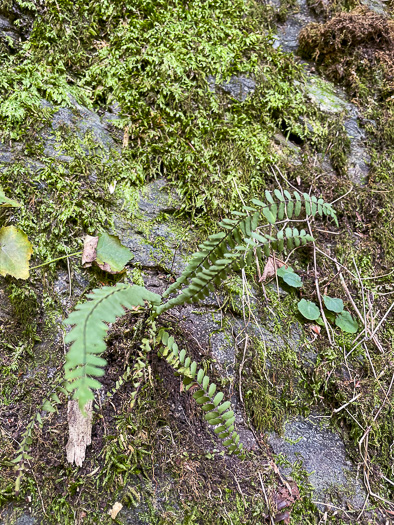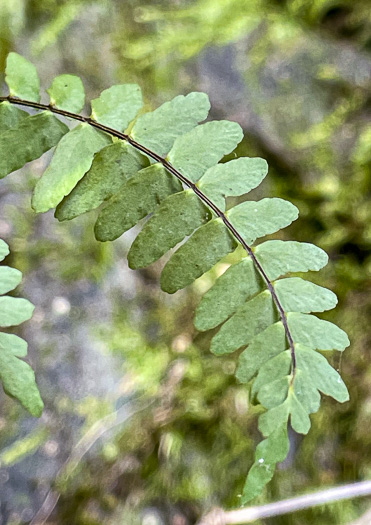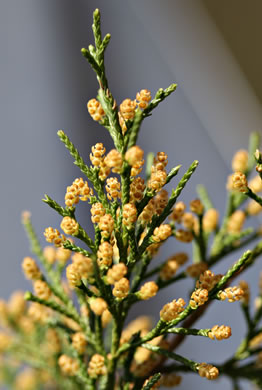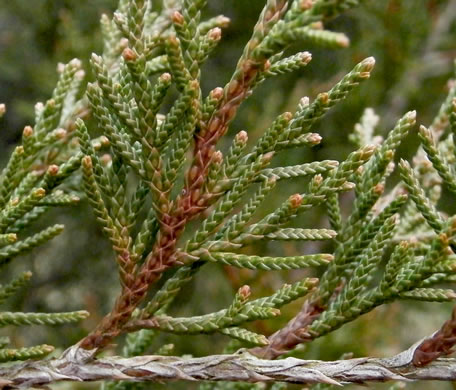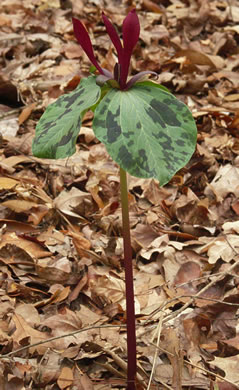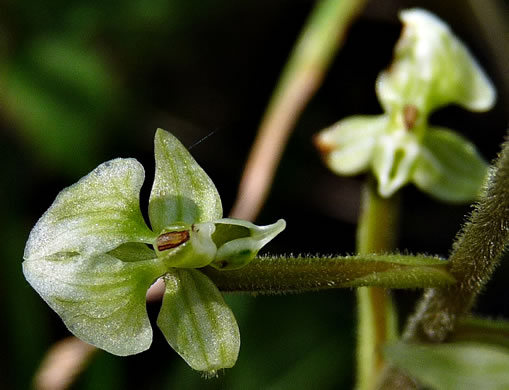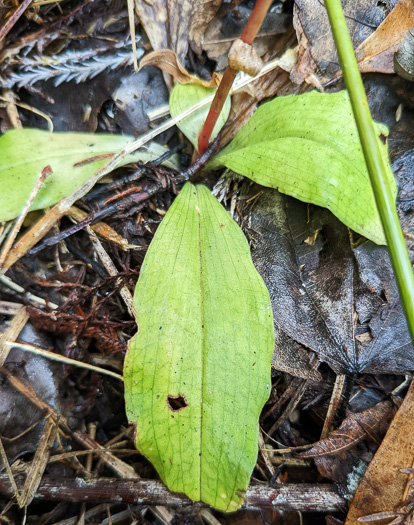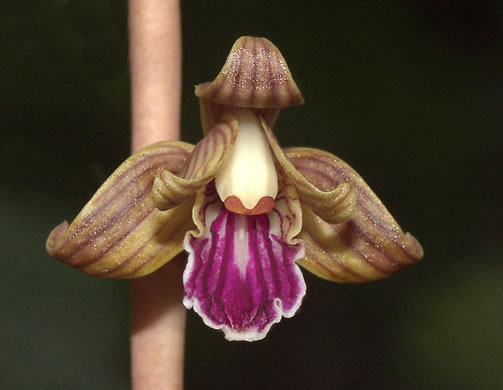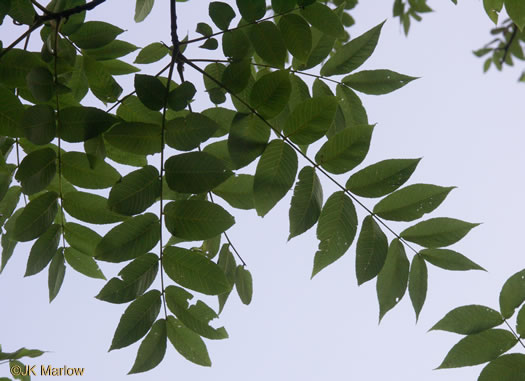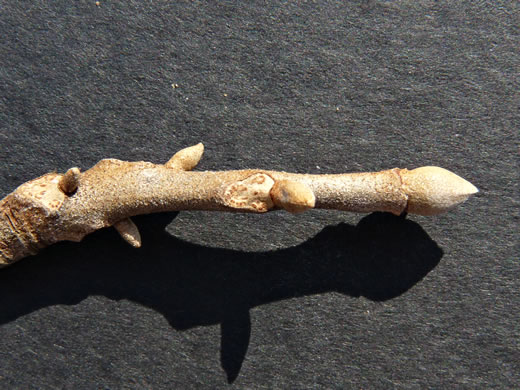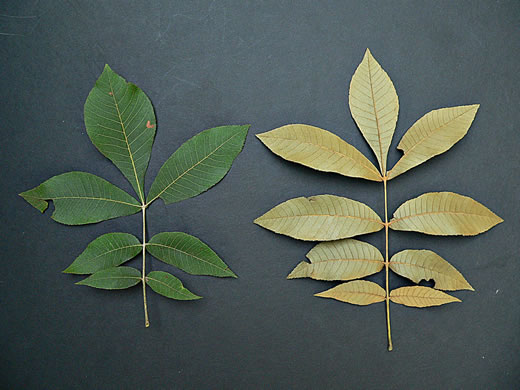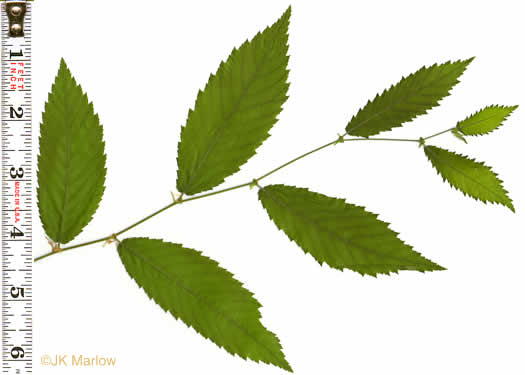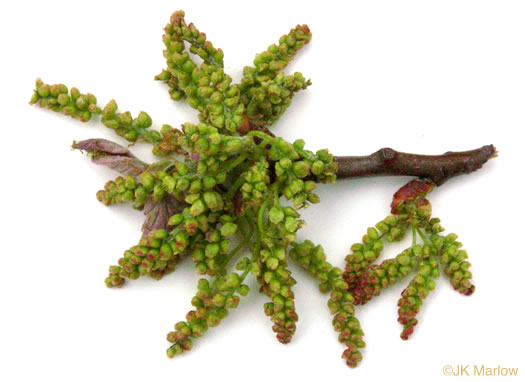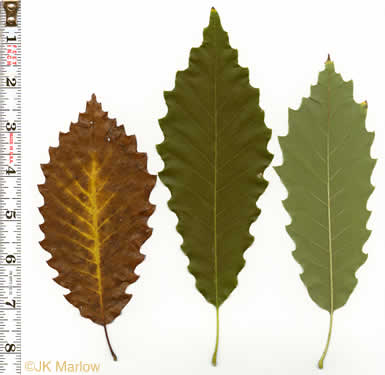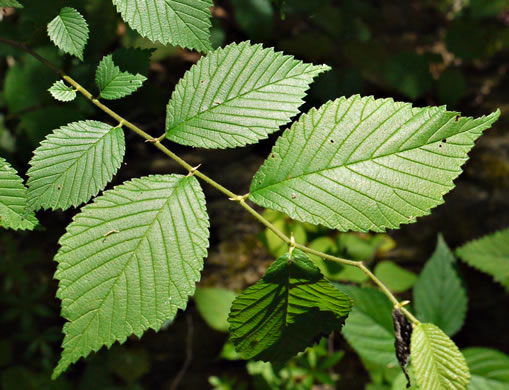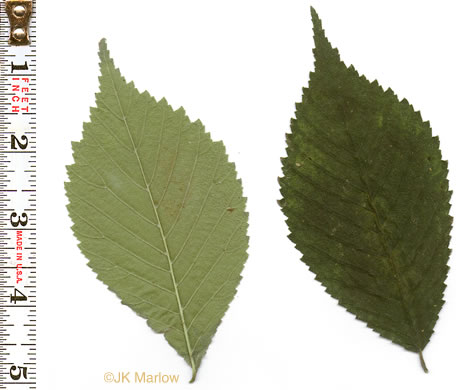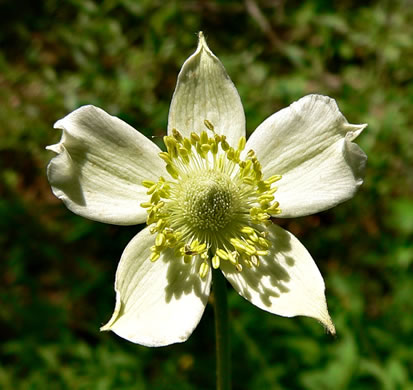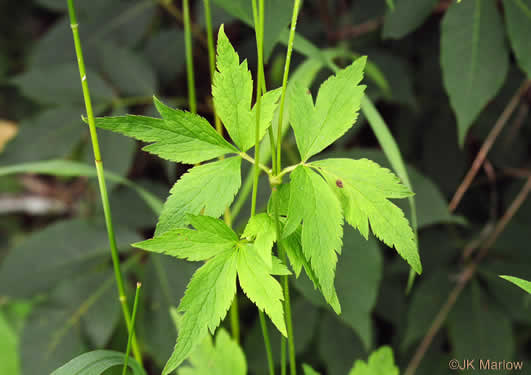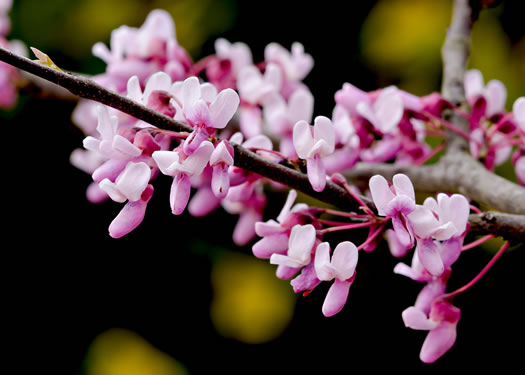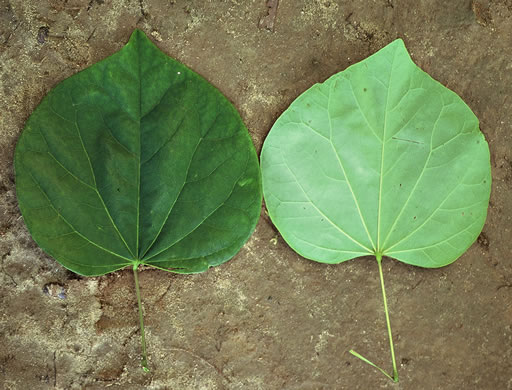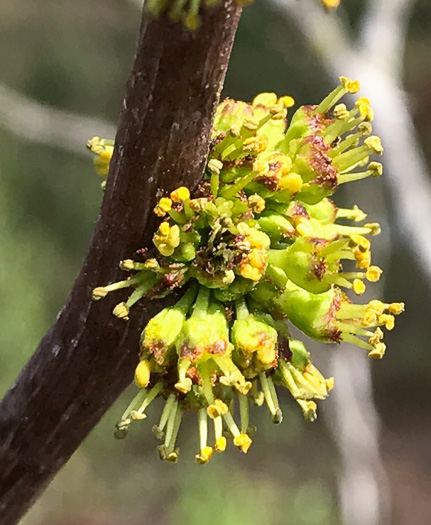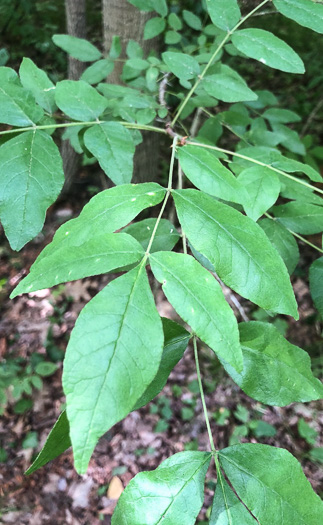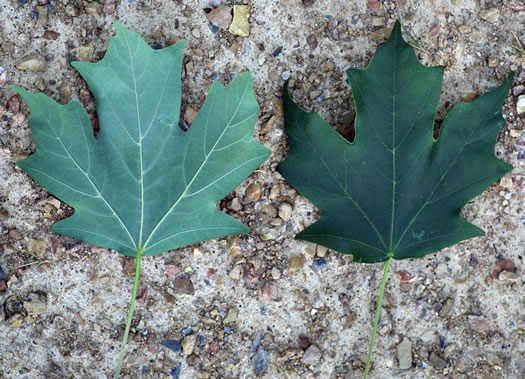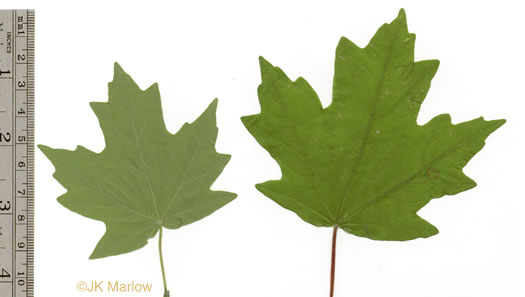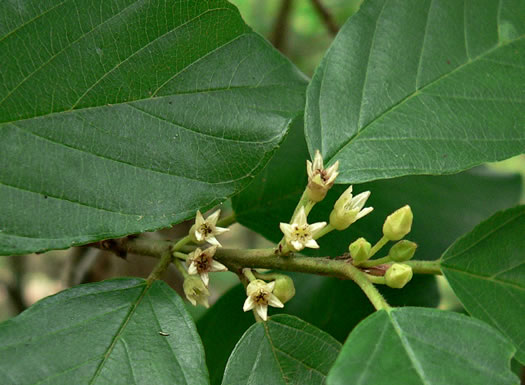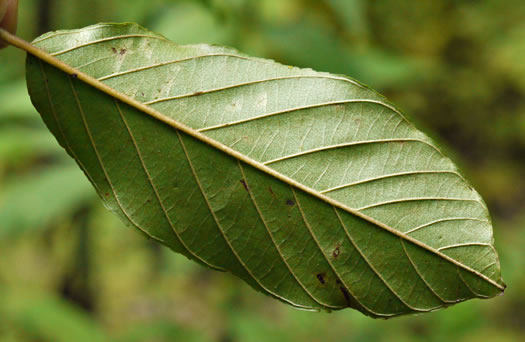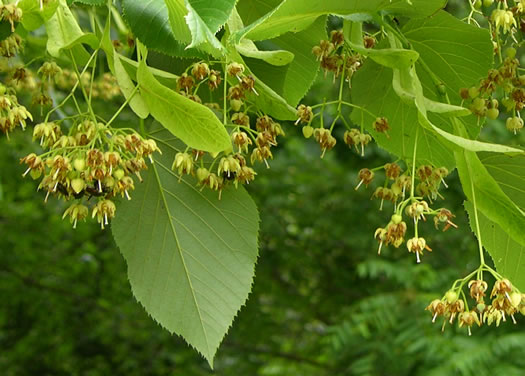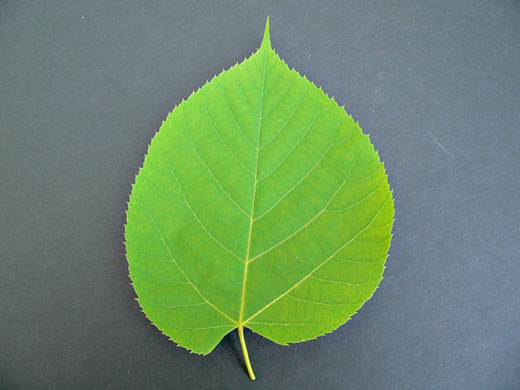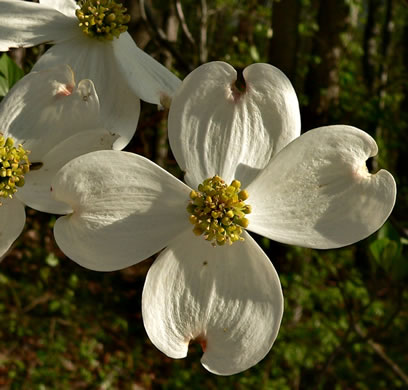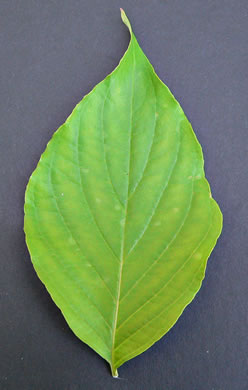South Carolina's Natural Wildflower Communities —
THE COASTAL PLAIN:
The calcareous forest communities
Cataract bogs
The calcareous forest communities do not occupy significant acreage in the coastal plain; however, they do contribute considerable diversity to the flora of the coastal plain as numerous rare and uncommon species are found there. Most of the undisturbed sites of this community are found on private lands that are not publicly available.
The calcareous forests occur on bluffs, slopes, or moist flats that overlay calcareous substrates. The substrate is either marl or limestone that was laid down as marine deposit when the ocean covered the coastal plain. The calcium from the underlying substrate is a major factor shaping the diversity and composition of the vegetation. Certain species of plants, referred to as calcicoles, thrive in a basic to circumneutral soil that results from the presence of calcium ions. These species generally are mixed with the flora of the surrounding community to form a diverse community. Classification of the various calcareous communities is not well developed; however, we do recognize two well-developed types.
Calcareous bluff forests
Calcareous bluff forests occur on mesic sites that overlay shallowly buried or exposed marl or limestone formations. These forests occur along rivers and creeks where erosion has exposed or brought the marl or limestone formation close to the surface.
Trees that characterize the calcareous bluff forests include
yellow chestnut oak (Quercus muehlenbergii),
hop hornbeam (Ostrya virginiana),
white basswood (Tilia heterophylla),
slippery elm (Ulmus rubra),
Carolina buckthorn (Rhamnus caroliniana),
black walnut (Juglans nigra),
and southern sugar maple (Acer barbatum).
Elements of the other deciduous forest communities occur and include
redbud,
flowering dogwood,
and eastern red cedar.
Herbaceous species are common and include many that are found in other deciduous communities of the piedmont and coastal plain. Several species, however, are either confined to or are more common in this community. They include
crested coral-root (Hexalectris spicata),
shadow-witch (Ponthieva racemosa),
mottled trillium (Trillium maculatum),
and thimbleweed (Anemone virginiana).
Often, where the calcareous substrate has been exposed, it hardens. Rainwater then erodes the substrate, forming recesses in which two rare ferns are able to become established by spore dispersal:
blackstem spleenwort (Asplenium resiliens)
and Wagner's spleenwort (Asplenium heteroresiliens).
Three sites that harbor this community are Old Santee Canal Park and Wadboo Creek in Berkeley County and Santee State Park in Orangeburg County.
Wet, flat, calcareous forests
This calcareous community occupies low, wet flats adjacent to river systems. The underlying marl formation is not exposed, but it is close enough to the surface to influence plant composition. It is not a common community in the coastal plain. In fact, it has been studied only along the western side of the Cooper River in Berkeley County and in several sites in and around Huger Creek in the Francis Marion National Forest (FMNF). It is not known to what extent it occurs throughout the coastal plain.
Recent studies on Mulberry and Lewisfield Plantations reveal the distinct flora of the community. The calcicoles that are present include mottled trillium, crested coral-root, shadow-witch, and American alumroot. These species also occur in the calcareous bluff forests. Two rare woody species are
nutmeg hickory (Carya myristicaeformis)
and prickly-ash (Zanthoxylum americana).
South Carolina's Natural Wildflower Communities is adapted from A Guide to the Wildflowers of South Carolina by Richard D. Porcher and Douglas A. Rayner. Used by permission.
To see pictures or additional information about a particular plant, click its name or its picture.

